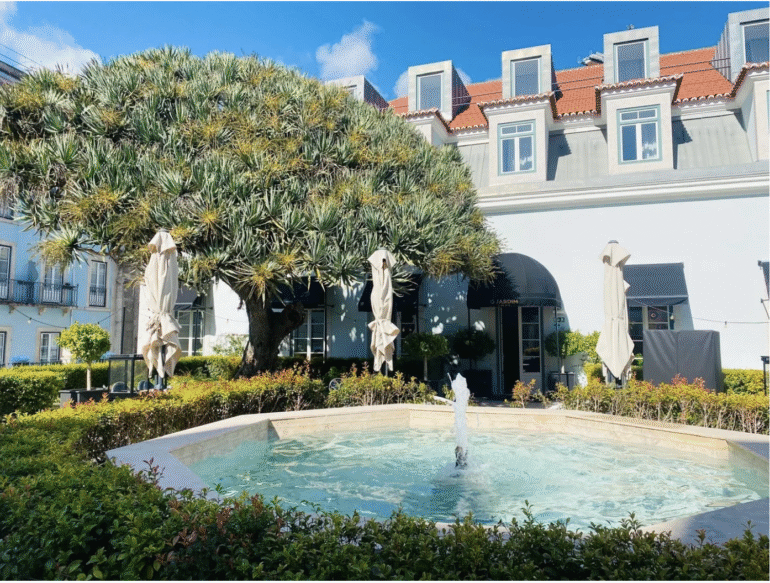Stay in a former Palace at The One Palácio da Anunciada, experience the breathtaking art and Japanese gardens of Gulbenkian Foundation, eat traditional Portuguese cuisine at Estrela da Sé and visit the birthplace of Saint Anthony.
Portugal’s coastal capital Lisbon was once the largest port in the European Atlantic and a center for Portuguese exploration in the 15th and 16th centuries. One of Western Europe’s oldest cities, Lisbon has a rich history. After the region was settled by the Celts, it was then founded by the Phoenicians who established a settlement called Ulissipo. The city was occupied by the Romans in 205 BC and ancient Lisbon became part of the Roman province of Lusitania.
Lisbon was partially destroyed in 1755 by a powerful earthquake and tsunami, and the city was rebuilt by the Marquês de Pombal. Lisbon hosted Expo ’98 and was named European City of Culture in 1994. Nowadays Lisbon is experiencing something of a Renaissance with more than four million visitors annually attracted by the city’s eclectic mix of Roman, Islamic and European cultures as well as its historic ruins, trams, fado music, pasteis de nata and famous azulejos tiles.
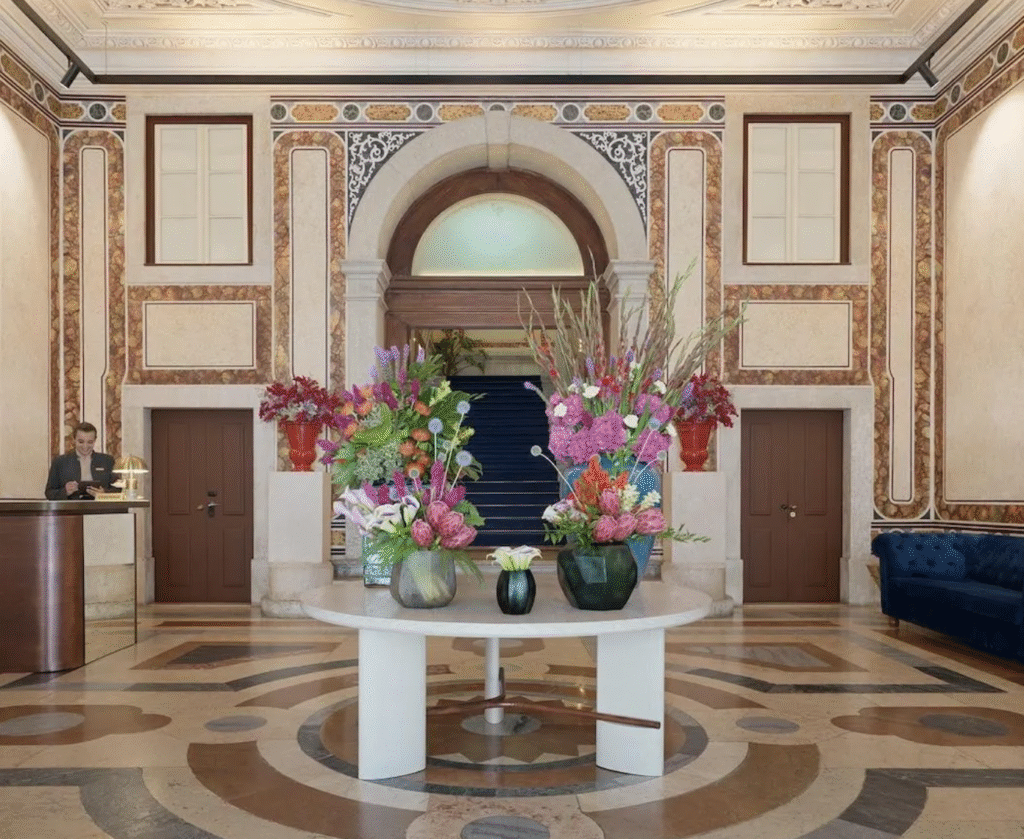
The One Palácio da Anunciada
The One Palácio da Anunciada is a new five-starhotel housed in a 16th-century Palace in the Baixa (Lower City)district. Carefully renovated and converted from a majestic Portuguese Palace to a luxurious hotel, The One Palácio da Anunciada features contemporary interior design while respecting the original beauty and features of the historic building. The interior design was masterminded by Chilean designer Jamie Beriestain, with a remit of combining tradition and history with luxury.
Spanish hospitality group H10 took over the abandoned Palace in 2019 and embarked upon an architectural project to restore it to its former glory, keeping original features such as the main staircase to the grand living rooms and reviving the entrance hall with its coffered ceiling and frescoes. Unique photographs of the building in its former incarnation as a Palace and the transformation to a hotel are exhibited through the hotel.
Leandro Muñoz, General Manager of The One Palácio da Anunciada explained to me the vision of the building’s restoration: “From the moment we acquired Palácio da Anunciada, our vision was clear—to create a unique luxury hotel that would seamlessly blend Lisbon’s rich history with the high standards of service that define The One Hotels. This extraordinary 16th-century palace, located in the heart of Lisbon, just steps from Avenida da Liberdade, was the perfect choice. Its historical significance, architectural beauty, and its rare 2,500-square-meter gardens made it an unparalleled opportunity to offer guests an experience that is both exclusive and authentically Portuguese. While we do not exclusively focus on historic renovations, we seek properties that have a unique character and allow us to create exceptional spaces. Palácio da Anunciada was a perfect match, as it allowed us to preserve an important part of Lisbon’s heritage while elevating it to a new level of contemporary luxury.”
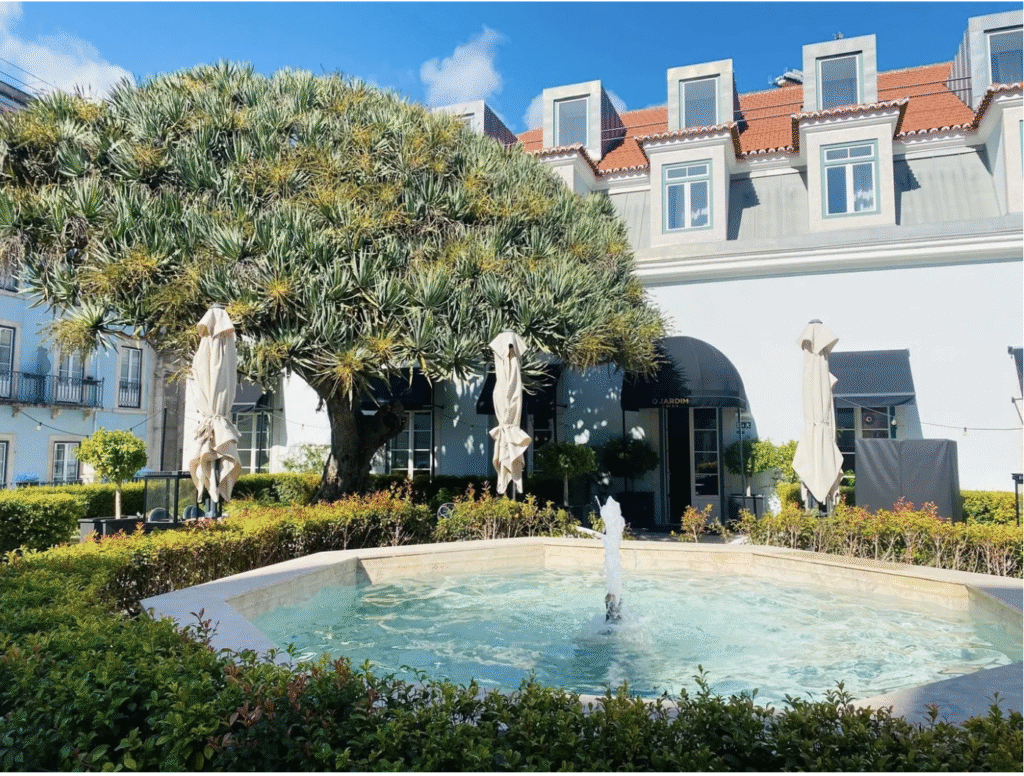
There is a gourmet restaurant, 2,500m² of gardens with an outdoor swimming pool, the Despacio Spa with sauna and indoor pool, and 82 rooms blending contemporary luxury with neutral colours, Portuguese marble and velvet upholstery. In keeping with Portuguese tradition, the hotel commissioned hand-painted blue and white ceramic pieces for each room. Each room has Natura Bissé Barcelona products and Egyptian cotton bedding from Casa Bassols 1790.
Highlights of the hotel include the beautiful interiors, The One contemporary art gallery, delicious breakfast in the ornate high-ceilinged dining room, sitting under the 100-year-old Dragon tree in the courtyard and wellness in the Spa. Impeccable service from the helpful staff throughout the hotel led by Assistant Manager Ines da Silva and Pedro at reception made the stay even more enjoyable.
Originally constructed in 1533, the Palácio da Anunciada later became part of the Estate of the Counts of Ericeira, a noble Portuguese family. Under their ownership, the palace enjoyed a period of great splendour until the building was destroyed in an earthquake that struck Lisbon in 1755. After its reconstruction, at the end of the 18th century, the palace became the residence of the Marquises de Rio Maior and illustrious names in Portuguese politics and society were born there, such as João Oliveira e Daun, Duke of Saldanha, who was prime minister of Portugal on several occasions between 1835 and 1870.
The One Palácio da Anunciada is located in the heart of Lisbon, close to Praça dos Restauradores and Avenida da Liberdade, within easy reach of shops, café’s, restaurants and museums.
Restaurant Estrella da Sé
Highlights of my stay in Lisbon included dinner at Restaurant Estrella da Sé in the Old Town, which is accessible via one of the city’s distinctive yellow number 28 trams. Estrela da Sé has been a restaurant since 1857 and is one of the last remaining restaurants in the city where people can dine in private cubicles. Once a common feature of Lisbon’s restaurants, the cubicles are created using pinewood panels which offer the chance for an intimate dinner, a game of chess or a private conversation.
Estrella da Sé has been in the hands of the same family for generations and has been a well-kept secret by a loyal clientele for years. Nowadays the restaurant is fronted by the amiable Alex, a wonderfully welcoming host with his wife running the kitchen where she cooks delectable Portuguese dishes and bakes delicious cakes served daily as a dessert. The eclectic interiors of Estrela da Sé retain the soul of the original 19th century restaurant founded by Agapito Serra Fernandes, and from the outside it can be identified by a star symbol that is repeated in elements of the interior decoration. Vintage photos and mementoes decorate the restaurant’s interior, creating the feeling of a time capsule retaining the aura of the original 19th century restaurant.
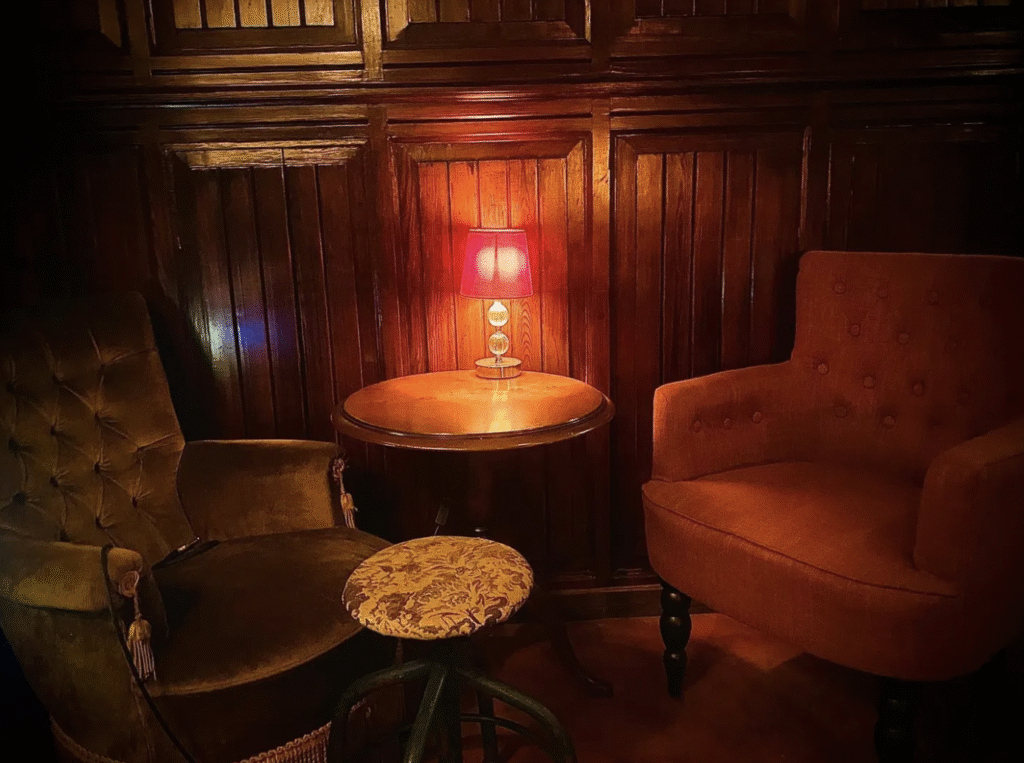
Offering Portuguese cuisine such as prawns fried with garlic, cod Pasteis with rice and salad, anchovies, tortilla and steak with egg and finely hand cut fries, the cooking is simple and delicious, using fresh ingredients and traditional recipes. There is a guitar in the main dining room which Alex encouraged my daughter to play, giving an impromptu lesson during dinner, and we played chess in one of the private booths after dinner. We loved the food and ambience so much that we returned the next day for lunch, followed by a visit to mass at the Church of St. Anthony opposite the restaurant.
St. Anthony Church and Museum
Built on the site where St. Anthony was born in 1195, the St. Anthony Church is dedicated to the saint known as a matchmaker and patron saint for the recovery of lost items. St. Anthony is Lisbon’s most popular saint, and there are daily pilgrimages to the church of people keen to touch his statue, which stands outside the church, and visit the site of his birth.
Originally constructed in the 1400s, the current church was rebuilt in 1757 after the 1755 Lisbon earthquake.The church’s façade and interior combine baroque and neoclassical style. Paintings by 18th-century artist Pedro Alexandrino de Carvalho can be found inside the church, which contains the remains of St. Justina, transferred from Rome in 1777 by Pope Pius VI. In the crypt where St. Anthony was born, there is a contemporary tile panel illustrating a 1982 visit to the church by Pope John Paul II. One of the branches of Lisbon Museum is adjacent to the church and houses a collection of paintings, sculpture, and manuscripts relating to the worship of the saint.
Calouste Gulbenkian Foundation
The Calouste Gulbenkian Foundation was founded in 1956 by Armenian philanthropist Calouste Sarkis Gulbenkian. Gulbenkian was born in 1896 in Turkey and lived for a time in Cairo, London and Paris before settling in Lisbon until his death in 1955.
The foundation is dedicated to enhancing quality of life through art, charity, science, and education. Through these initiatives the Foundation continues to honor its founder’s legacy. The Gulbenkian Museum houses an eclectic collection spanning 5,000 years of art history.
It would be easy to spend a day on the extensive site of the Gulbenkian foundation, for there is so much to discover at the Calouste Gulbenkian Museum and Centro de Arte Moderna (CAM), which are connected by enchanting Japanese gardens where people can relax, sketch, read or have picnics under the trees. Ducks swim on the pond outside the modern art centre while turtles bask in the sun.
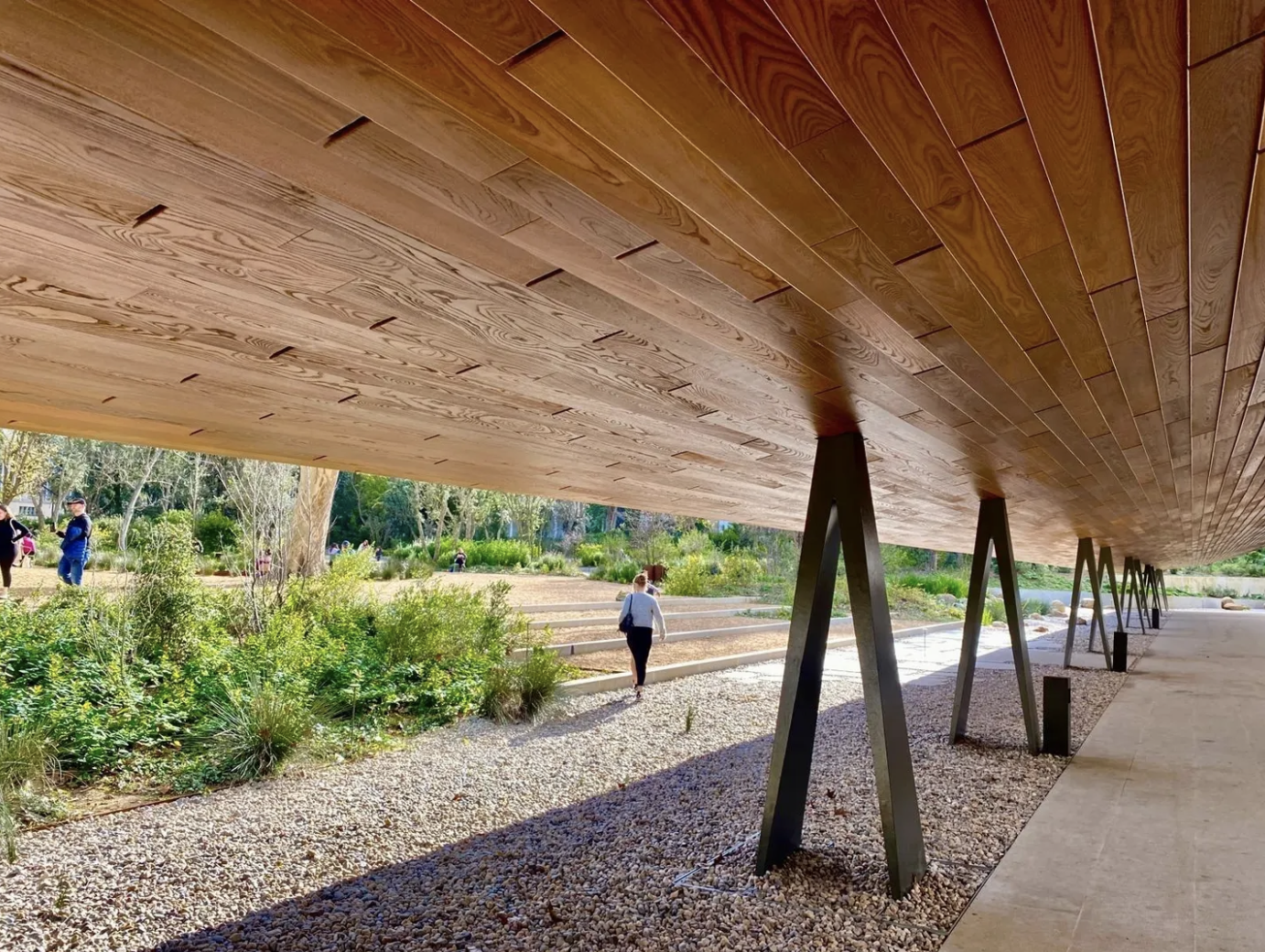
CAM’s building was redesigned by Japanese architect Kengo Kuma, who collaborated with landscape architect Vladimir Djurovic to integrate architecture and nature. Kuma completely reimagined the previous CAM building, which was designed by British architect Leslie Martin and inaugurated in 1983.
The CAM Collection consists of over 12,000 works including paintings, sculptures, drawings, and photographs by notable Portuguese artists such as Amadeo de Souza-Cardoso, Almada Negreiros, and Paula Rego. Current exhibitions include ‘Paula Rego and Adriana Varejão: Between Your Teeth’.

CAM reopened in September 2024 after an extensive renovation led by Japanese architect Kengo Kuma. Kuma designed a 100-meter-long canopy with an undulating ceramic roof, inspired by traditional Japanese architecture.
This major reconfiguration of CAM is part of a wider project that aims to establish a greater connection between the building and the Gulbenkian Garden. Kuma’s architecture dissolves the boundary between nature and architecture with the canopy creating a passage between CAM and the garden. Kuma was inspired by the Engawatypology when he created a path under the eaves of the roof that leads to the gardens, as is the style of traditional Japanese houses.
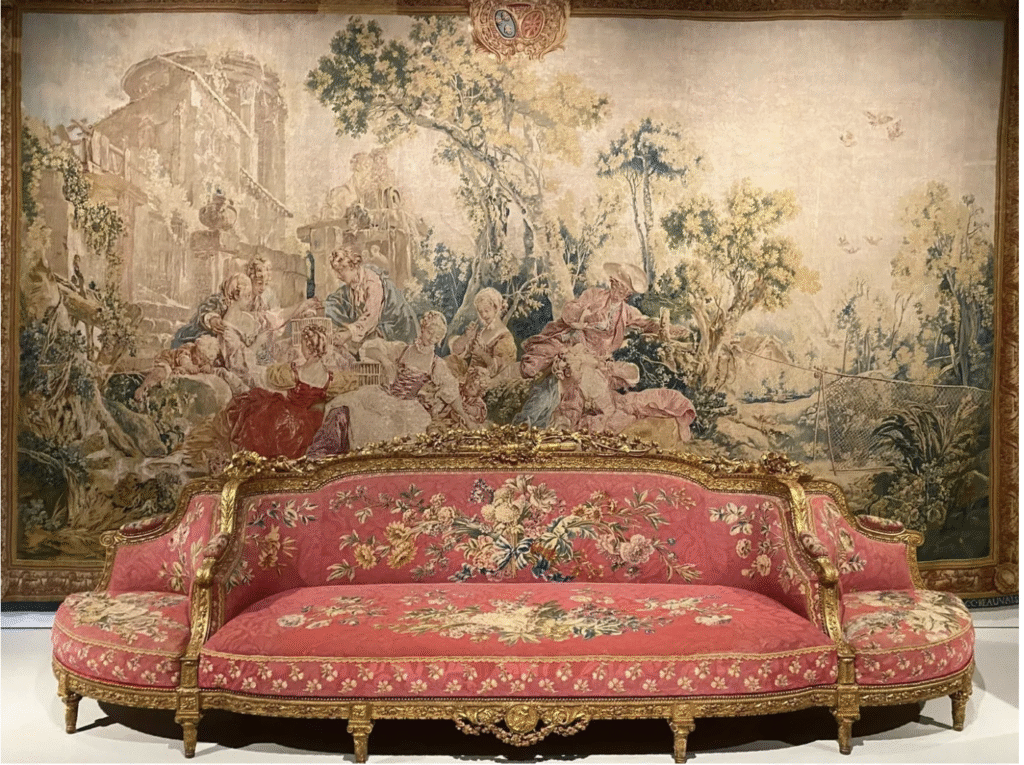
The Calouste Gulbenkian Museum in the north of the Gulbenkian garden was designed by architects Ruy Jervis d’Athouguia, Pedro Cid and Alberto Pessoa in 1969 to house around six thousand pieces from Gulbenkian’s vast collection of antiquities, paintings, jewellery, manuscripts and decorative arts. Curated into rooms displaying exceptional examples of Egyptian art, Greco-Roman art, and art from Mesopotamia, the Islamic Orient, Armenia and the Far East, as well as a stunning collection of Impressionist paintings and sculpture, illuminated manuscripts, eighteenth-century French decorative arts and exquisite pieces by René Lalique.
This article was originally published on Forbes by Culturalee Founder Lee Sharrock.
Photography © Sky Sharrock


